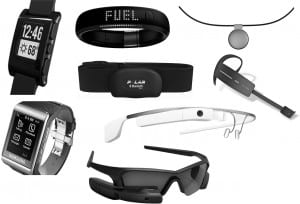 Wearable technology – clothing and accessories that incorporate advanced technology – is a hot topic in the tech world at the moment.
Wearable technology – clothing and accessories that incorporate advanced technology – is a hot topic in the tech world at the moment.
Calculator watches defined this category in the 1980s. Fast-forward two decades later and this field is being driven by a revolution in computing power that allows technology to become increasingly accessible, usable and, above all, wearable.
Oculus Rift, the virtual reality head-mounted display bought by Facebook for $2.3billion, Samsung’s Galaxy Gear, the Android-based smart watch, and the widely anticipated Google Glass are just some of the popular technologies that are getting people excited.
I was lucky enough to attend the Wearable Tech Conference in Tel Aviv in mid-May, which featured long standing experts in this field, as well as some of the hottest start-ups working in this area.
Here is a brief roundup of the discussion and some hot start-ups that were showcased at the conference:
Potential
The consensus is that we are at the start of the market and just about to reach the real potential of what wearable technology can be used for.
As Neil Cox, EMEA Marketing Director for New Markets at Intel, explained, there are expected to be 450 million wearable devices being used by 2019, compared with 50 million at present. Cox talked through the arc of future devices, which at the moment are being used mostly for sports and fitness tracking (think FitBit and the Nike Fuelband), but will soon move into smart watches, then health and medical technologies, and finally into smart clothing that will be used by the wider population.
Responsibility
Steve Mann, who many consider to be the father of wearable technology, entertained the audience with his incredible inventions, including early versions of digital eye glasses that he has been wearing since 1980.
Robert Scoble, technology evangelist and author, spoke about the marrying of wearable devices and big data. Scroble talked about the opportunities and challenges this will provide for brands, which will have more data than ever before on consumers, but also a responsibility to use the data carefully. Whilst encouraging brands to open up to the conversation about privacy, Scroble suggested three rules for companies working in this area:
1. Be transparent
2. Be correctable – for example, if a user lives near a golf course, they won’t always want to receive offers for golf products.
3. Be controllable – just because a company can extract data, doesn’t mean a company should extract data.
The conference finished with a showcase of some of the most exciting wearable tech companies that we should be looking out for. They included:
– Avegant Glyph: originally produced for military purposes, Yobie Benjamin has created a headphone that flips down into a retinal display. Think Beats headphones with a mobile personal theatre rolled in.
– SCiO: having already raised $1.3million so far on Kickstarter, this hand held device scans items such as food and medicine and can identify the product based on its molecular information and tell you details such as nutritional value, ripeness, contents and calorie count.
– HereO: an advanced GPS watch designed specifically for kids.
– Breathometer: a small breathalyser device that plugs into your smartphone and allows you to you monitor alcohol consumption. As well as informing you how long before you are “‘Back to Zero”, the app can help you access services such as local taxis companies.


